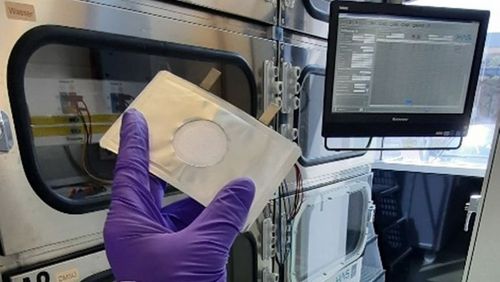Conventional potting soils and other gardening substrates usually contain peat, which is extracted from bogs. However, during the process of peat extraction large amounts of CO2 are released into the atmosphere and contribute to climate change. To protect peatlands, their biodiversity and the climate, a team of researchers led by Michael Wark, Professor of Technical Chemistry at the University of Oldenburg's Institute of Chemistry, is developing biochars and hydrochars from green waste and other waste biomass as peat substitutes.
The project, entitled "Peat-free, Climate-Friendly Plant Substrates from Hydrochar and Biochar" (TOPKO), will run until April 2027. The University of Oldenburg will receive around 633,000 euros from the Federal Ministry of Food and Agriculture to fund the project and has partnered with two companies, Torfwerk Moorkultur Ramsloh Werner Koch GmbH & Co. KG from the municipality of Saterland and Floragard Vertriebs-GmbH from Oldenburg, to implement it.
The participants aim to develop a regional circular economy in which the raw materials used in the project remain in the region throughout the various stages of production. Instead of importing common peat substitutes such as coconut pulp and fibre from India or Sri Lanka, they will use green waste sourced from local landscape conservation areas and through extensive peatland management methods such as paludiculture to produce and test various biochars and hydrochars. Agricultural residues in liquid form, such as liquid manure or digestate from biogas plants, are particularly suitable for the production of hydrochars, while pyrolysis biochars are produced by the carbonisation of green waste in a process similar to that used to produce charcoal. The chars will then be used for co-composting by mixing them with other compost materials.
The researchers will first test the resulting char-compost mixtures in a greenhouse under controlled conditions to determine how well the peat-free substrates perform as potting soil. This will be followed by container experiments with typical plant nursery shrubs, before the co-composting is tested on an industrial scale. The results will serve as the basis for the development of a market-ready, peat-free regional gardening substrate for use in agriculture, plant nurseries and private horticulture.
The researchers will carry out live cycle assessments during the project to evaluate the sustainability of the carbon cycle. The project partners will also conduct socio-economic analyses to assess the reactions of potential customers to the newly developed alternative substrates and the resulting market opportunities.




